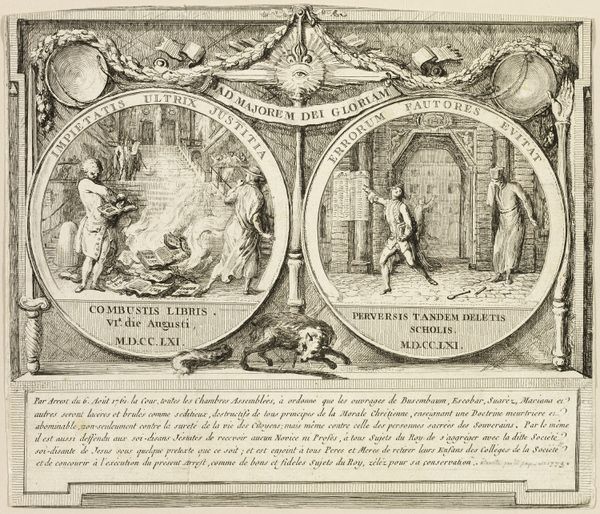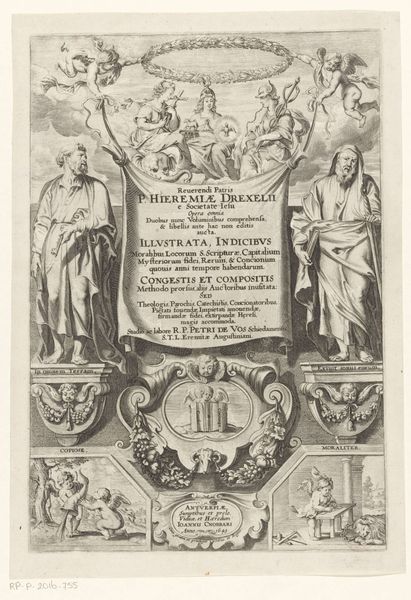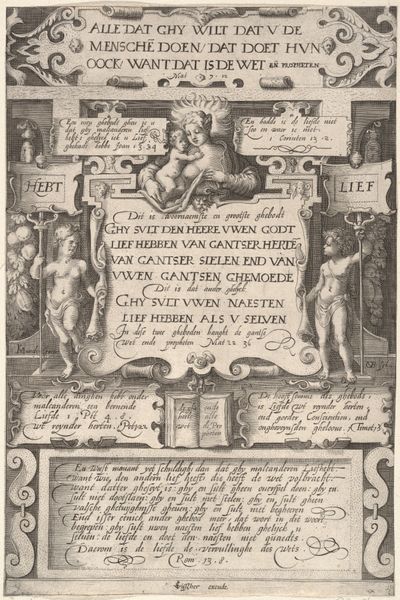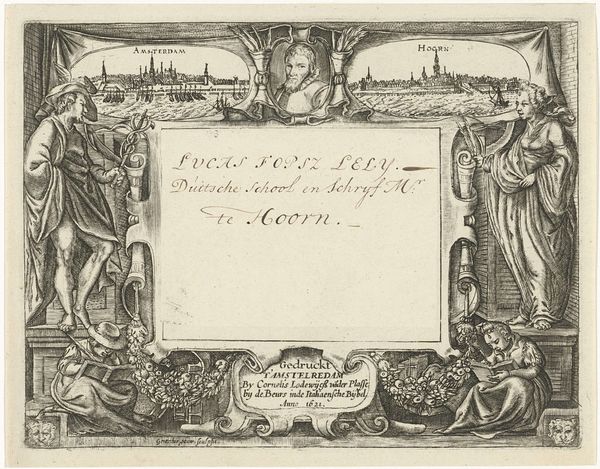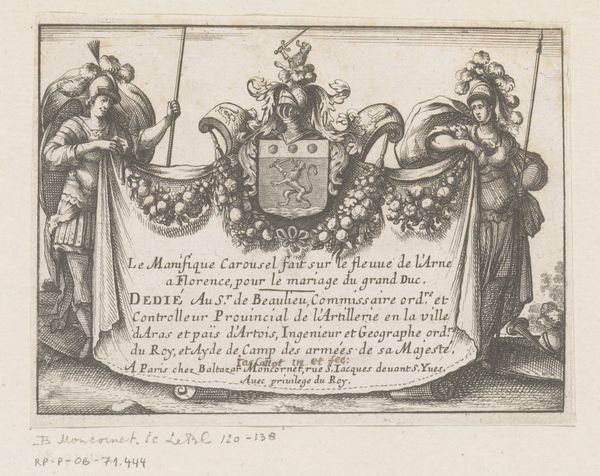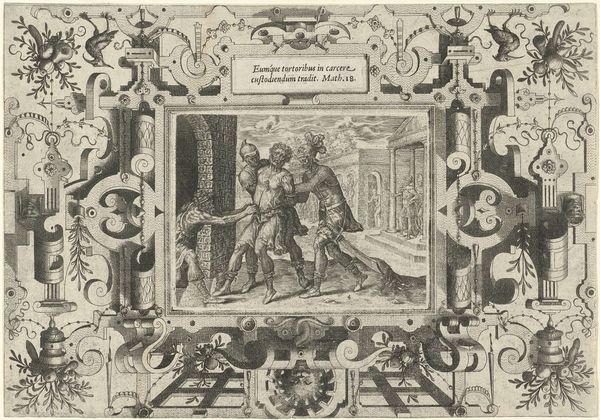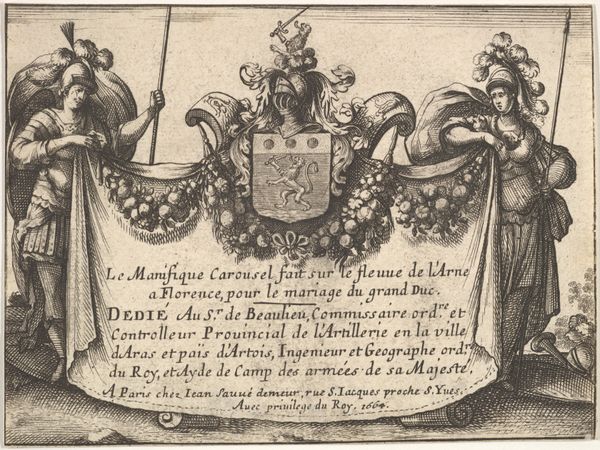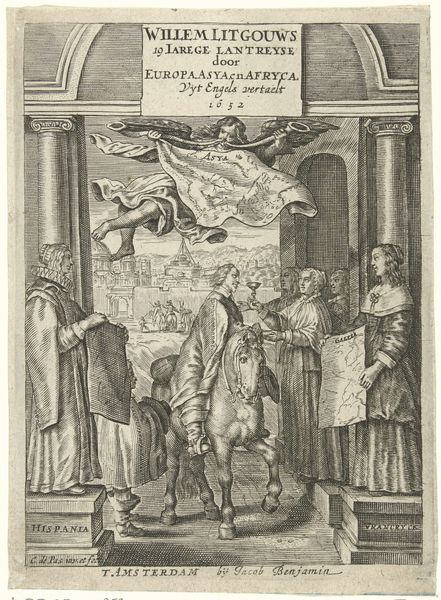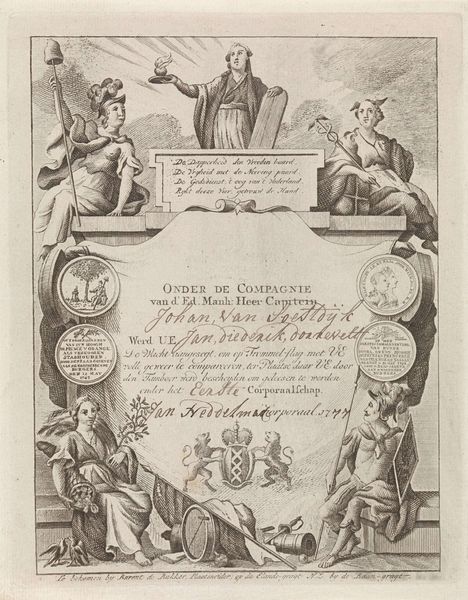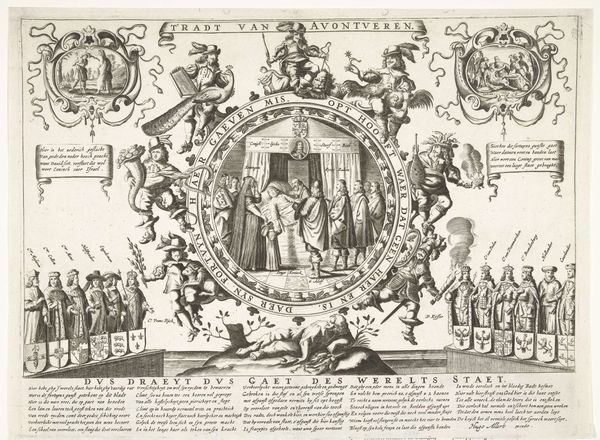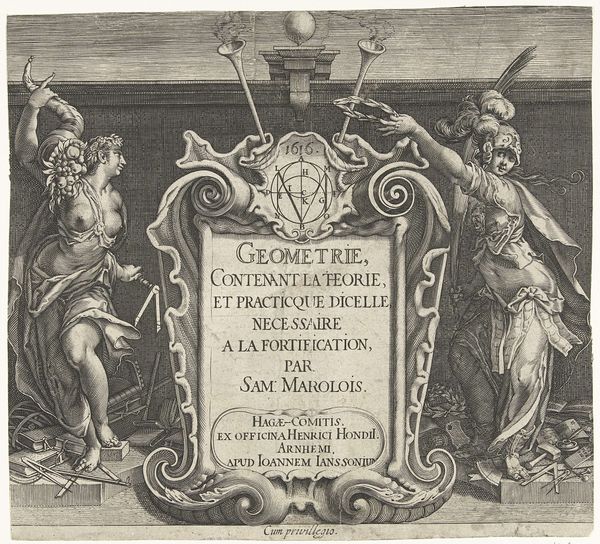
Cartouche met serietitel en aan de zijdes een man te paard en een huilende vrouw 1608
0:00
0:00
print, engraving
#
portrait
#
baroque
# print
#
pen illustration
#
old engraving style
#
figuration
#
line
#
genre-painting
#
engraving
Dimensions: height 99 mm, width 135 mm
Copyright: Rijks Museum: Open Domain
Editor: Here we have "Cartouche with series title and on the sides a man on horseback and a weeping woman," an engraving by Jacob van der Heyden from 1608. The figures flanking the central text look rather dramatic; it reminds me of a stage play. What do you see in this piece? Curator: Well, let’s think about the context of its creation. This is an engraving – a print. That immediately tells us about its intended use: reproduction, distribution, and consumption by a wider audience than, say, a unique painting. It was designed to be multiplied. Consider the labor involved in creating the matrix for printing - the skill, the time, and how this relates to access to imagery. Editor: So, you are suggesting its materiality speaks to production on a large scale and its subsequent affordability? Curator: Precisely. Notice the man on horseback, a clear symbol of power and the elite, versus the weeping woman – perhaps representing grief, loss or a lamenting lower class. These figures act almost as decorative supports around the *central* text, don’t they? Is their display mere aesthetics, or is this intended to amplify the messages and position them favorably with certain consumers, perhaps learned patrons, or as the German text says: for the favor of students? Editor: The contrast of their imagery in juxtaposition to text is fascinating to consider from the consumption and economic perspectives. So this engraving then is not just about conveying textual information but also reflecting on societal structures of power during that era? Curator: Exactly. The material processes and visual language are inextricably linked to the socio-economic fabric of the time. What story do the chosen details, design, labor and the print's purpose as multiples tell us about consumption and accessibility back then? Editor: This makes me see it less as a static image, and more as evidence of a complex network of production, dissemination, and social meaning. Curator: Right, we've really brought a whole new context by delving into materials and labour behind the images, shifting how we understand both art, production and the society that created it.
Comments
No comments
Be the first to comment and join the conversation on the ultimate creative platform.
